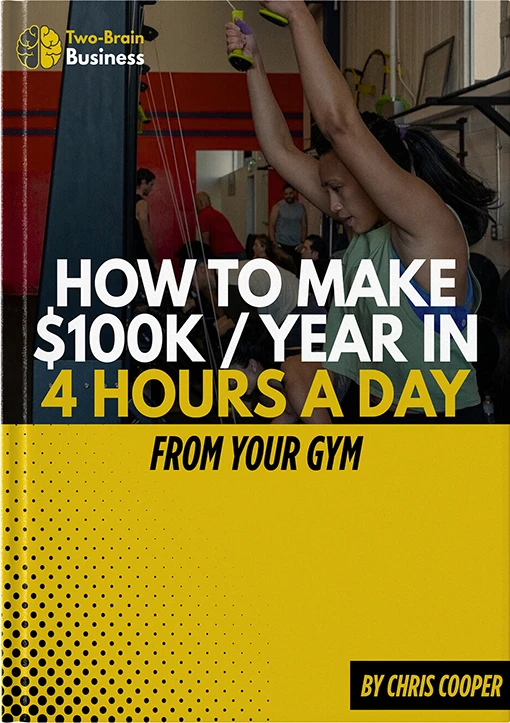The best new clients come from your current clients.
This is an established truth in the fitness industry.
When a client refers a friend, you get someone:
- Who already knows your service.
- Who already knows your rate (and can probably afford it).
- Who already has at least one friend in your gym.
- Who already knows what to expect.
- Who already knows, likes and trusts you—this regard is very hard to buy, no matter how much money you spend on ads.
The problem with referrals: Waiting for them doesn’t work.
Waiting is far too passive. You can wait all year for “the gym” to come up in a conversation between a client and a work buddy.
And your clients aren’t salespeople: They’re not going to convince their friends to join (but you could).
Affinity Marketing takes the process from passive to active. And you’re not even asking for referrals; you’re asking how you can help. This is a major difference. If you present your offer in the right way, it won’t feel like a sales pitch to your clients. It’s just a helpful proposal from a trusted coach.
To deliver your offer smoothly, you must practice.
Go through the Affinity Marketing plan at least 20 times in the next few days. Practice on your dog, on your neighbor or spouse, or in the mirror.
Helping, Not Selling
In Goal Review Sessions with clients (full plan here), you have built-in opportunities for Affinity Marketing.
When you ask a current client “are you happy with the progress you’ve made?” and the client says “yes!” then you should continue on the current path and turn to marketing.
Say: “That’s great. We’re super proud of you!”
Pull out your camera and ask if you can film a short video. Hit record and ask, “What’s one thing you wish someone had told you about my gym before you joined?”
Next, ask, “Who’s been the most helpful to you on your journey? I’d like to send a thank-you card.”
Finally, get a name and contact information, then reach out and offer to help the client’s spouse, coworker, friend, etc. Be very specific.
Two examples of how to do that:
Ask your client: “How would you feel about calling them right now, while I’ve got you here?”
This is 50-50; some clients won’t feel comfortable, and that’s fine. If the client agrees, call the new lead and say, “Hey, Brian! I’m sitting here with Sam and we were just talking about you! She’d like to invite you in to work out with her. What do you say?”
Practice asking your client for a contact and permission to call, then practice the phone conversation!
If the client would rather not have you call a friend, you can email instead. CC your client on the email for credibility.
Subject line: [Your client’s name]
Text: Hey [lead name], I was just chatting with [client] and we agreed that we’d love to have you in for a partner workout. [Client’s] next appointment will be [exact date and time]. Can you make it?”
Your assignment: Practice Affinity Marketing 20 times in the next seven days!
Practice Building Relationships
Affinity Marketing—or any kind of marketing, really—makes many gym owners feel uncomfortable. But marketing is really just building relationships. It’s meeting new people and offering to help them.
The question I ask myself is this: “Do I care enough to overcome my awkwardness and help this person?”
That’s why the majority of new clients at my gym, Catalyst, come from the personal relationships I, our coaches and our clients make.
The thing that stops most gym owners from succeeding isn’t their knowledge: It’s their fear.
You overcome fear through practice.

